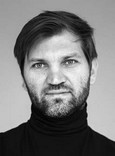Digital monitoring of the exercise's heart rate as a tool for determining personalized physical activity norms
Keywords:
health-improving physical culture, rationing of physical activity, pulse, heart rate, wearable devices.Abstract
Objective of the study was to substantiate digital monitoring of the exerciser’s heart rate as a tool for determining personalized physical activity standards.
Methods and structure of the study. Within the framework of the methodology for rationing physical activity of those engaged in health-improving physical culture, the totality of daily measurements of their heart rate is considered as a system of states of the human body. This solution is necessary when determining personalized physical activity standards based on daily heart rate data obtained using wearable devices. The problem of rationing physical activity has two contradictions: the mass distribution of wearable technologies and the insufficient use of their functionality to solve the problems of rationing health-improving physical activity; increasing the effectiveness of health-related activities and the lack of modern technologies for determining personalized standards. To solve the problem of personification of norms, it is proposed to use the theory of rank analysis, which is promising when studying daily non-Gaussian heart rate data obtained using wearable devices. The technology for rationing physical activity consists of the stages of preparation, collection and processing of data and development of proposals. Based on the results of the technology, based on the lower and upper limits and training potential, personalized values of physical activity standards are determined for three levels of training (beginner, intermediate, advanced). The recommendations obtained can be used as personal standards for physical activity and updated if necessary (after a month, quarter or year). Physical activity levels can be monitored using smart watches both during and after classes. At the same time, the obtained heart rate norms are personal and are suitable only for one person.
Results and conclusions. The proposed system of states of the human body creates the prerequisites for determining personalized standards of physical activity and developing effective physical education and health programs for those involved in health-improving physical culture.
References
Amosov N.M., Bendet Ya.A. Fizicheskaya aktivnost i serdtse. Kyiv: «Zdorovye» publ., 1984. 228 p.
Belyakova M.Yu., Dyakonov A.D. Primeneniye tsifrovykh i informatsionnykh tekhnologiy v sfere fizicheskoy kultury i sporta. Ekonomika i upravleniye v sporte. 2021. Vol. 1. No. 3. pp. 133-148.
Gnatyuk V.I. Zakon optimalnogo postroyeniya tekhnotsenozov. 3rd ed., corr., sup. Electronic text data. Kaliningrad: KITS «Tekhnotsenoz» publ., 2019. 896 p. Available at: http://gnatukvi.ru/ind.html, free.
Zaitsev A.A. Fizicheskaya kultura vzroslogo cheloveka. Kaliningrad: Ministerstvo zdravookhraneniya Kaliningradskoy oblasti publ., 2007. 36 p.
Kovalev A.A., Shaikhullin T.D., Erofeev V.V., Veretennikov I.S., Larin A.N. K probleme fizicheskogo razvitiya i funktsionalnogo sostoyaniya kursantov posredstvom personifikatsii pri dozirovanii dvigatelnoy aktivnosti. Uchenyye zapiski universiteta im. P.F. Lesgafta. 2023. No. 7. pp. 178-181.
Kovalev A.A., Zaitsev A.A., Farafonov A.Yu. Optimizatsiya psikhofizicheskoy podgotovki sportsmenov po sportivnomu oriyentirovaniyu s ispolzovaniyem sovremennykh tekhnologiy. Barnaul. Altayskiy gosudarstvennyy universitet, 2022. 236 p.
Kovalev A.A., Gnatyuk V.I., Kivchun O.R., Zaitsev A.A. Razrabotka indeksa optimalnoy fizicheskoy aktivnosti dlya morskikh spetsialistov. Morskiye intellektualnyye tekhnologii. 2022. No. 4-3 (58). pp. 100-104.
Kudrin B.I. Vvedeniye v tekhnetiku. Tomsk: TGU publ., 1993. 552 p.
Stetsenko N.V., Shirobakina E.A. Tsifrovizatsiya v sfere fizicheskoy kultury i sporta: sostoyaniye voprosa. Nauka i sport: sovremennyye tendentsii. 2019. Vol. 22. No. 1 (22). pp. 35-40.
Sheinin A.A., Geller B.L. Printsip optimalnoy kombinatsii elementov dlya sistem razlichnogo tipa. Baltiyskiy morskoy forum [Baltic Marine Forum]. Proceedings International Baltic Maritime Forum: in 6 volumes. Kaliningrad. 2021. pp. 215-218.
Sheinin A.A., Bugaev A.V., Vinogradov I.G. Metodika otsenki dvigatelnoy aktivnosti sportsmena na osnove rangovogo analiza. Uchenyye zapiski universiteta im. P.F. Lesgafta. 2020. No. 1 (179). pp. 343-352.
Wang F., Wang X., Henriksen A., Goris J., Khurshid A., Asuncion M. Evaluating the Validity of Current Mainstream Wearable Devices in Fitness Tracking Under Various Physical Activities: Comparative Study. Vicente JMIR Mhealth Uhealth. 2018. No. 6. p. 94.
Wisløff U., Bjarne M. Nes, Christian R. Gutvik, Carl J. Lavie, Javaid Nauman Personalized Activity Intelligence (PAI) for Prevention of Cardiovascular Disease and Promotion of Physical Activity. The American Journal of Medicine. 2017. No. 130. pp. 328-336.


